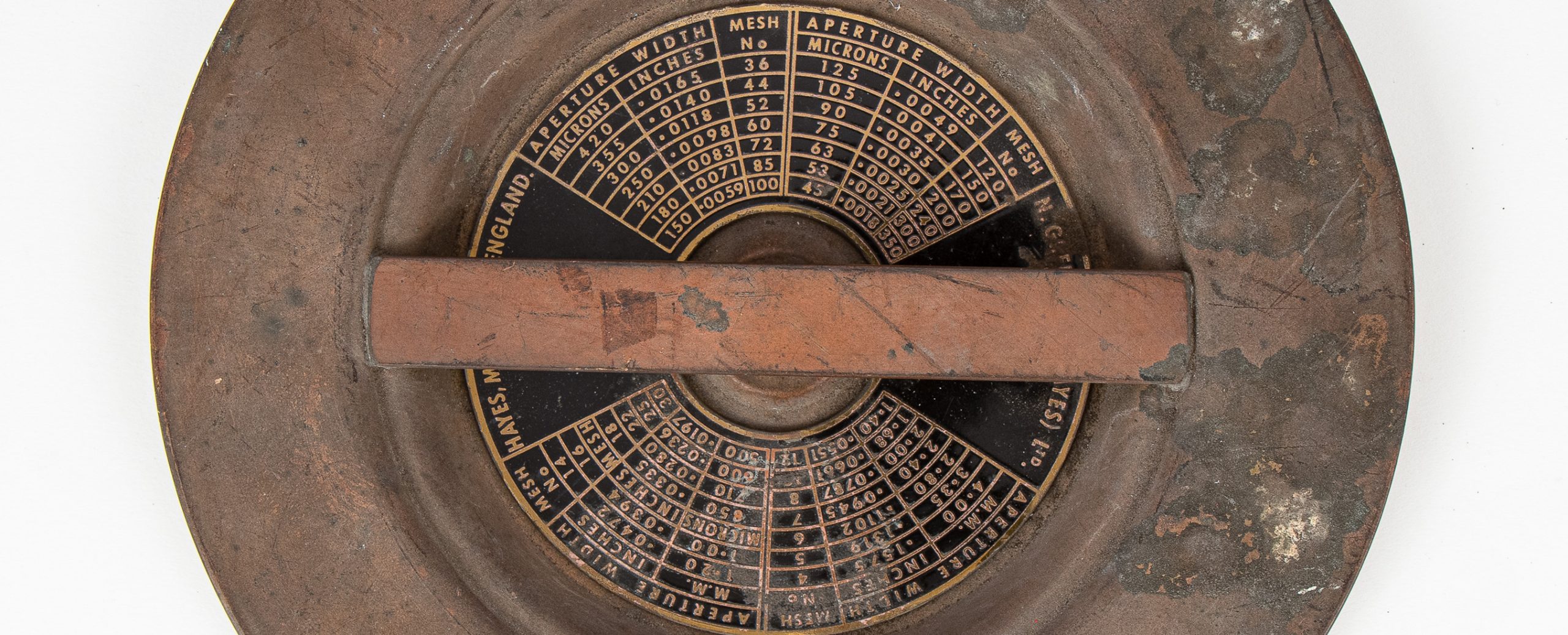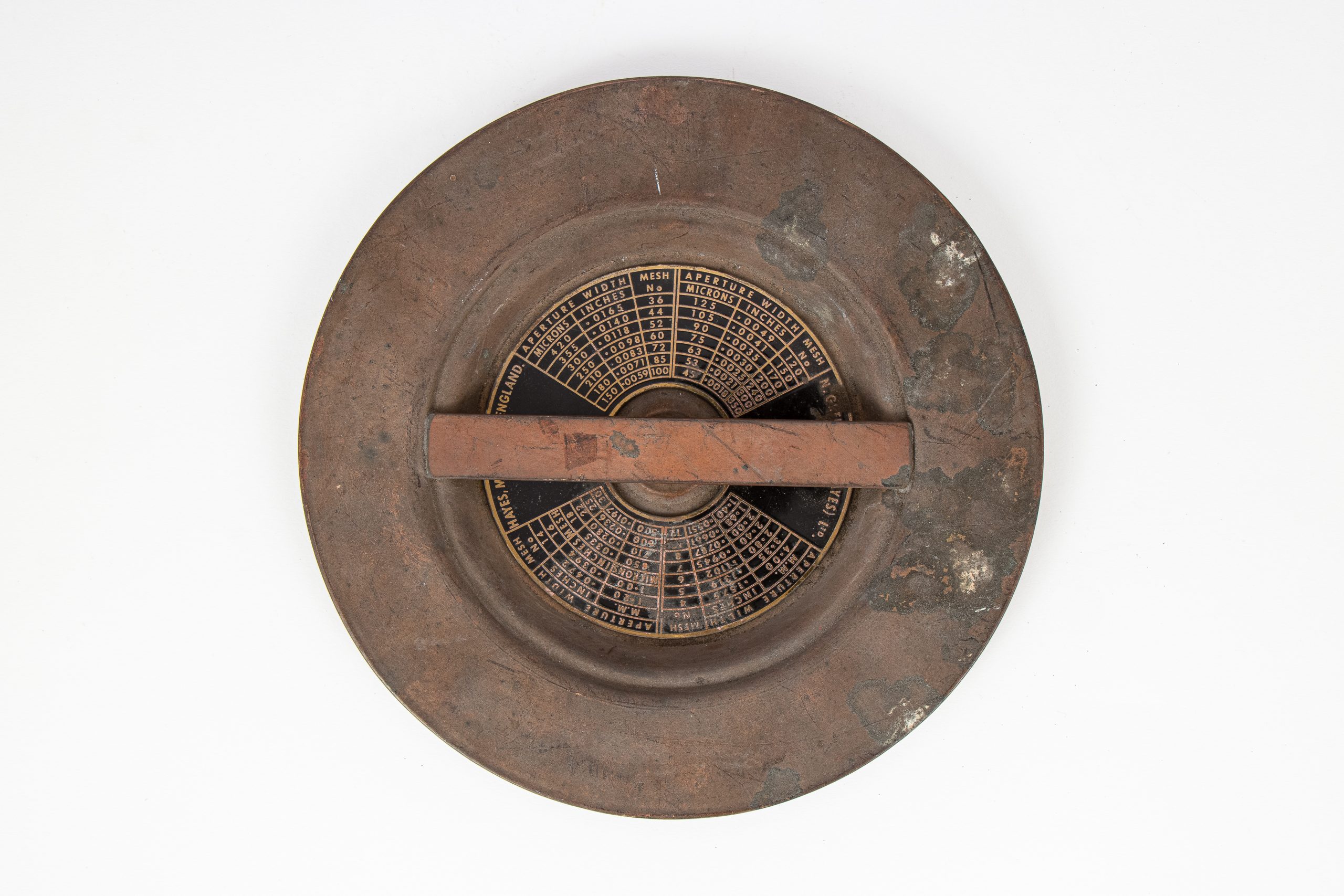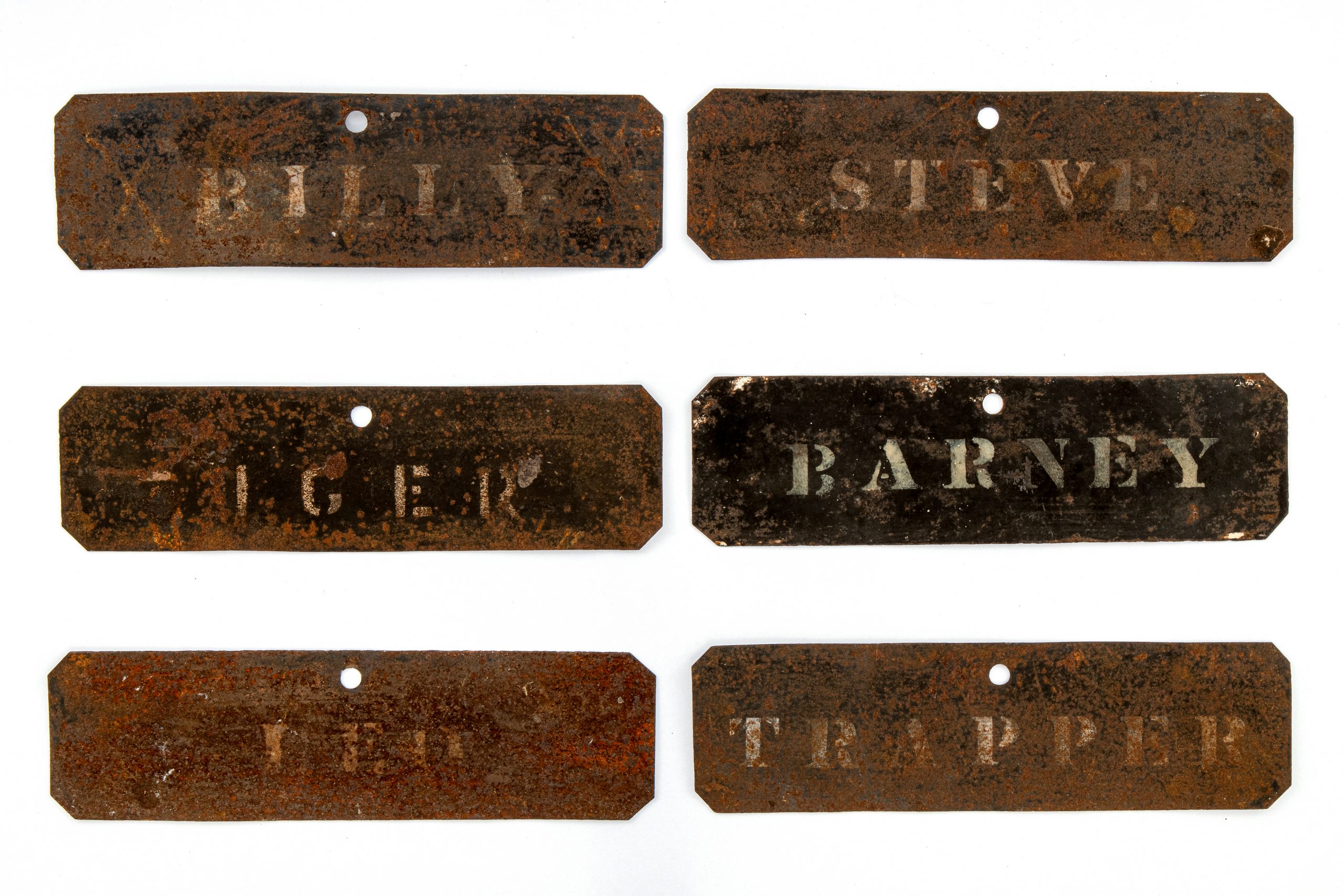Giants of Wire
A Greenings Sieve Cover
N. Greenings and Sons was the oldest and largest British wire company in its heyday. The company was founded in 1805 by Nathaniel Greenings in Warrington and would go on to internationally export precision industrial products well into the twentieth century.
One of the items produced by Greenings was the laboratory sieve, a tool used to determine particle size. This object is part of sieve stack which journeyed from a factory in Middlesex, England, to the mining town of West Wallsend, New South Wales.
Laboratory sieves are made up of wires weaved to create a mesh with a consistent aperture (opening, hole, or gap). This aperture is used to determine the particle size of a substance or separate a mixture of substances.
For a simple example, think of a digger panning for gold. Earth is poured into their sieve and the soil passes through but small traces of gold are captured in the mesh.
Miners from West Wallsend Colliery used Greenings sieves to determine the appropriate mesh size for screening whatever was mined, including separating waste material from coal. This cover placed on a stack included a handy chart so it only took a glance to determine the size of whatever passed through the mesh in microns, millimetres, and inches.
Like many English manufacturing companies, Greenings success began to struggle alongside the tough economic climate of the late twentieth century.
In 1983, workers were on strike for twenty-three weeks following waves of job losses that came following a company takeover. This ultimately cost the company over £1 million. They finally dissolved in the early 2000s but, on another continent, the legacy of the company lives on through this innocuous rusted cover.





